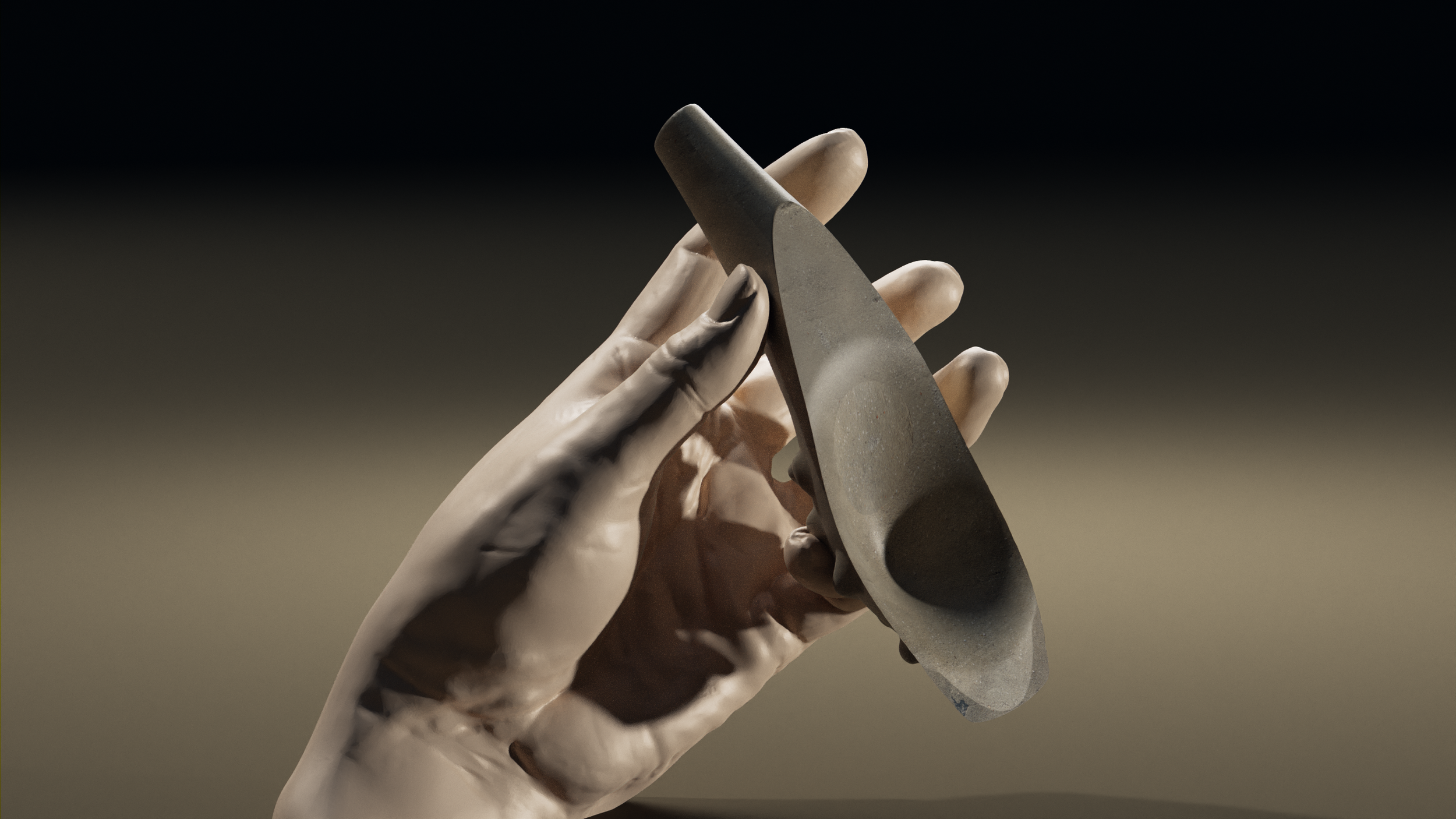
SUGARWARE
by Weiran Tao
Weiran (Erin) Tao
As a biodesign activist, I am currently a student pursuing a master's degree in an interactive communication (ITP) program at NYU, my role basically is to explore possibilities in connecting works like physical computing, 3d scanning and modeling, prototype fabrications to systematic thinking of biophilic design and materials future speculations.
Contact info
Email: xxerintc [at] gmail [dot] com
@xxerinnb @e7labyrinth
Do you have a sweet craving but are also worried about having too much?
Sugarware is our proposed solution to replace cane sugar and artificial sweeteners. Sugarware is a spoon that can potentially be made of recycled bagasse, the fibrous byproduct from cane sugar production, with an eye-catching blunt spiky design at the bottom, increasing the surface area of contact with taste buds. A ligand layer permanently coated on the spoon will trigger the sweet-sensing response, without consuming any sugar or artificial sweeteners.
This project aims to develop a spoon that incorporates a design that enhances sweet flavor without consuming sugar or synthetic sweeteners, removing the concerns about elevated glucose levels, gut health, and the environmental impacts on sugarcane production.
Scientific Reference:
Diabetes statistics | niddk. (n.d.). National Institute of Diabetes and Digestive and Kidney Diseases. Retrieved October 26, 2022, from https://www.niddk.nih.gov/health-information/health-statistics/diabetes-statistics
Suez, J., Cohen, Y., Valdés-Mas, R., Mor, U., Dori-Bachash, M., Federici, S., Zmora, N., Leshem, A., Heinemann, M., Linevsky, R., Zur, M., Brik, R. B.-Z., Bukimer, A., Eliyahu-Miller, S., Metz, A., Fischbein, R., Sharov, O., Malitsky, S., Itkin, M., … Elinav, E. (2022). Personalized microbiome-driven effects of non-nutritive sweeteners on human glucose tolerance. Cell, 185(18), 3307-3328.e19. https://doi.org/10.1016/j.cell.2022.07.016
Tayyab, M., Yang, Z., Zhang, C., Islam, W., Lin, W., & Zhang, H. (2021). Sugarcane monoculture drives microbial community composition, activity and abundance of agricultural-related microorganisms. Environmental Science and Pollution Research International, 28(35), 48080–48096. https://doi.org/10.1007/s11356-021-14033-y
Taste-Adjusting Chopsticks makes food taste saltier without adding salt. (2022, May 26). Dezeen. https://www.dezeen.com/2022/05/26/taste-adjusting-chopsticks-device-food-saltier/
UNESCO-IHE, Institute for Water Education. (2010). The green, blue and grey water footprint of crops and derived crop products. Value of Water, 47(2).
von Molitor E, Riedel K, Krohn M, Hafner M, Rudolf R and Cesetti T (2021) Sweet Taste Is Complex: Signaling Cascades and Circuits Involved in Sweet Sensation. Front. Hum. Neurosci. 15:667709. doi: 10.3389/fnhum.2021.667709
Design Reference:
Designers craft purposefully absurd cutlery for Basel food event. (2016, August 14). Dezeen.https://www.dezeen.com/2016/08/14/absurd-jouw-cutlery-experimental-gastronomy-food-event-steinbeisser/
Tableware as Sensorial Stimuli cutlery by Jinhyun Jeon. (2012, November 18). Dezeen. https://www.dezeen.com/2012/11/18/tableware-as-sensorial-stimuli-cutlery-by-jinhyun-jeon/
Finger-shaped Goûte spoon could make food taste better than normal cutlery. (n.d.). Retrieved January 12, 2023, from https://www.dezeen.com/2017/02/08/finger-shaped-goute-spoon-michelfabian-make-food-taste-better-cutlery/
Sheth, S. (2020, October 7). This spoon can stimulate your tastebuds to make food taste better—Yanko Design. https://www.yankodesign.com/2020/10/07/this-spoon-can-stimulate-your-tastebuds-to-make-food-taste-better/
Taste-Adjusting Chopsticks makes food taste saltier without adding salt. (n.d.). Retrieved January 12, 2023, from https://www.dezeen.com/2022/05/26/taste-adjusting-chopsticks-device-food-saltier/
Electric bowl and spoon gives you salty taste without any salt—Yanko Design. (n.d.). Retrieved January 12, 2023, from https://www.yankodesign.com/2022/09/29/electric-bowl-and-spoon-gives-you-salty-taste-without-any-salt/
Du, F. L., Du, Q. S., Dai, J., Tang, P. D., Li, Y. M., Long, S. Y., Xie, N. Z., Wang, Q. Y., & Huang, R. B. (2018). A comparative study for the organic byproducts from hydrothermal carbonizations of sugarcane bagasse and its bio-refined components cellulose and lignin. PloS one, 13(6), e0197188. https://doi.org/10.1371/journal.pone.0197188




